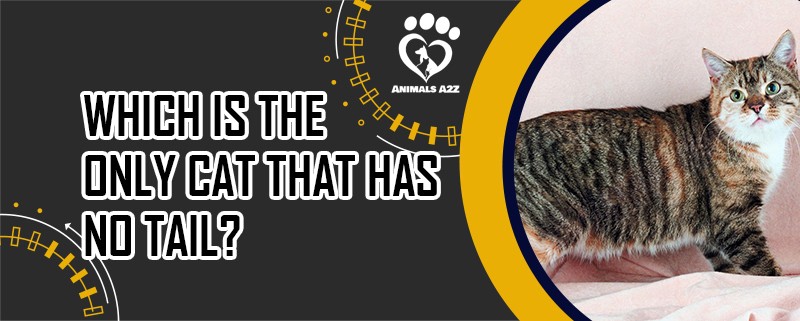The cat without a tail is the Manx. The Manx cat originated from an ancient breed and is known for its lack of a tail. Its tail-lessness is caused by a dominant genetic mutation, now referred to as the Manx gene.
The Manx is a cute, intelligent, playful feline companion. This unique breed is a medium-sized cat with a sweet round face who will show adoration for their owners through their actions.
Table of Contents
Brief History
The Manx is included as one of the oldest known cat breeds, which has led to some wonderful stories that are not necessarily true. The Manx breed was created through genetic mutation: the Manx gene. The Manx gene’s dominance combined with several differences in the cat’s appearance, to make Manx cats a unique type of breed.
The Manx cat has existed for centuries on the Isle of Man, where these cats are completely tail-less, and some have a short and stubby tail. The breed’s modern name is called “kayt manninagh,” which means “cat of Maan.” The Manx gene is really a dominant tail suppression gene of recent bobtail breeds.
Appearance
This cute medium-sized feline is about 14 to 16 inches long and can weigh from 8 to 12 pounds when it’s fully grown. Manx cats have round heads, round eyes, round rumps, and whisker pads. These cats can have either short or long-haired coats that are both easy to maintain.
Manx cats come in a vast range of colors and patterns like white, black, cream, and brown coats. It depends on their parents’ breed and dominance of genes through breeding. These cats have gorgeous eyes that look really stunning in various colors like gold, green, and blue.
This cat breed may be known for being tail-less, but some Manx have tails found in different lengths. They are called longies, stumpies, stubby, rumpies, and riser. Rumpies refers to the Manx cats that don’t have a tail at all. The riser is a rumpy that has a rise of bone at the end of their spine, stumpies only have partial tails, stubbies have short tails, and longies have normal-length tails.
Behavior
Manx cats are always friendly towards other cats and young children because they are patient and calm when it comes to socializing with others. They are sweet in nature and really affectionate towards their owners. They might follow their owners everywhere since it makes them feel safe and comfortable.
They are intelligent, playful, and very sweet companions. They are curious cats that are smart enough to learn simple tricks. They are also adaptable and feel joy when doing new things and enjoy meeting others. Because of their adaptability and calm personalities, Manx cats do not easily get upset about the things going on around them.
These cats mostly vocalize when they want and need attention from their owners. Manx cats enjoy the company of people and lively playtime. Since they are sometimes laid-back, avoid overfeeding them and play with them regularly, so they don’t get overweight.
Health
Manx cats are generally a healthy cat breed and not especially prone to other health issues. However, they are prone to one medical condition specific to a Manx cat. It is called “Manx Syndrome,” a condition that also comes from the Manx gene and excessively shortens a cat’s spine. This condition can significantly affect their spinal cord nerves and may cause a form of spina bifida.
When the spinal cord is left exposed from birth, it can also cause an overly small bladder and trigger bowel and digestion problems. This can be hard to be diagnosed and may result in sudden premature death. It can only be avoided by understanding and doing a proper process of breeding for a Manx feline.
Proper Treatment and Nutrition
Manx cat takes time to become full-grown cats. As Manx cat gets older, it is required to give them a complete and balanced diet to keep them healthy and boost their immune system against diseases. They must receive the right amount of protein, minerals, fats, and vitamins. It is also good to feed them food that is rich in omega 3 fatty acids, and always make sure to keep them hydrated.
Invest in good cat grooming materials since these cats need to be groomed daily and need a good brush to keep their coat silky and in good condition. When shedding season starts, make sure to regularly brush their coat and remove loose hair. It is also good to avoid feeding them foods that can affect their fur.
Frequently asked questions about Manx cats
Is a Manx cat a good pet?
Manx cats are great pets. They’re intelligent and very affectionate towards their owners. They don’t get easily upset and are very adaptable when it comes to socializing with other pets or people. They are very playful and show their loyalty to their family members because they have a dog-like personality.
How do they interact with other people?
Manx cats show their friendliness and sweet natures when dealing with other people. They have a placid behavior, so they can interact well with young and older people. Manx cats enjoy the company of being comfortable with people. They always feel the joy of meeting other people, but they tend to pick a special person they like best.
How to avoid Manx Syndrome?
There is no effective treatment against Manx Syndrome. However, it can be prevented by properly assessing the information and process when doing breeding for Manx cat. The likelihood of severe problems can be reduced by avoiding tail-less cats’ breeding with other tail-less cats since one copy of a faulty gene can produce the defect.
Final thoughts on Manx cats
The cat that is widely recognized for being tail-less is the Manx cat breed. A mutation that shortens the tail gave birth to this unique breed. These cats are playful, intelligent, loveable, and very affectionate towards their owners and families.
Manx cats are usually strong and healthy, but are prone to “Manx Syndrome” and Spina Bifida, a severe condition that may result in sudden premature death. Although having a Manx cat as a pet can have potential unknowns, the tail-less, adorable cat still keeps on enjoying life, making it an excellent companion in life.


